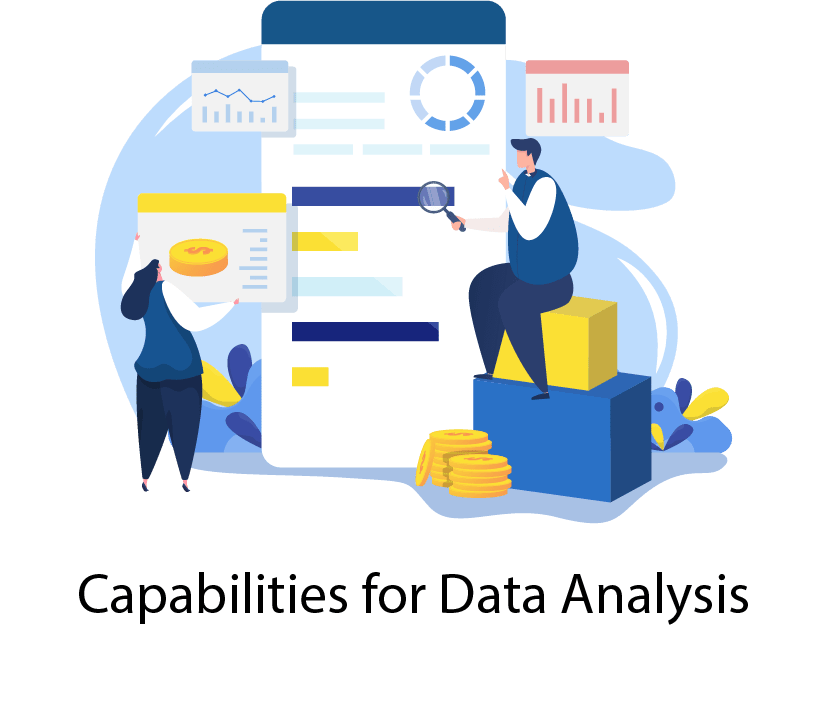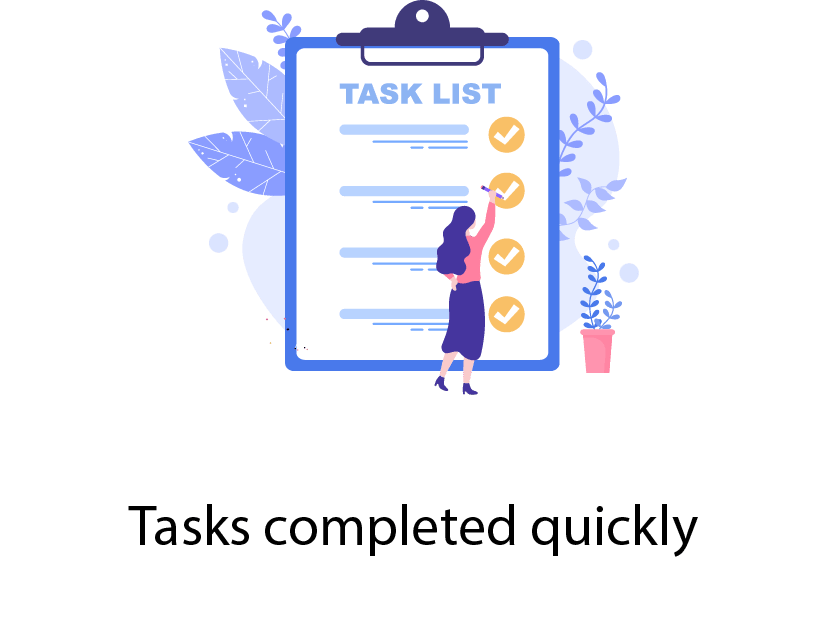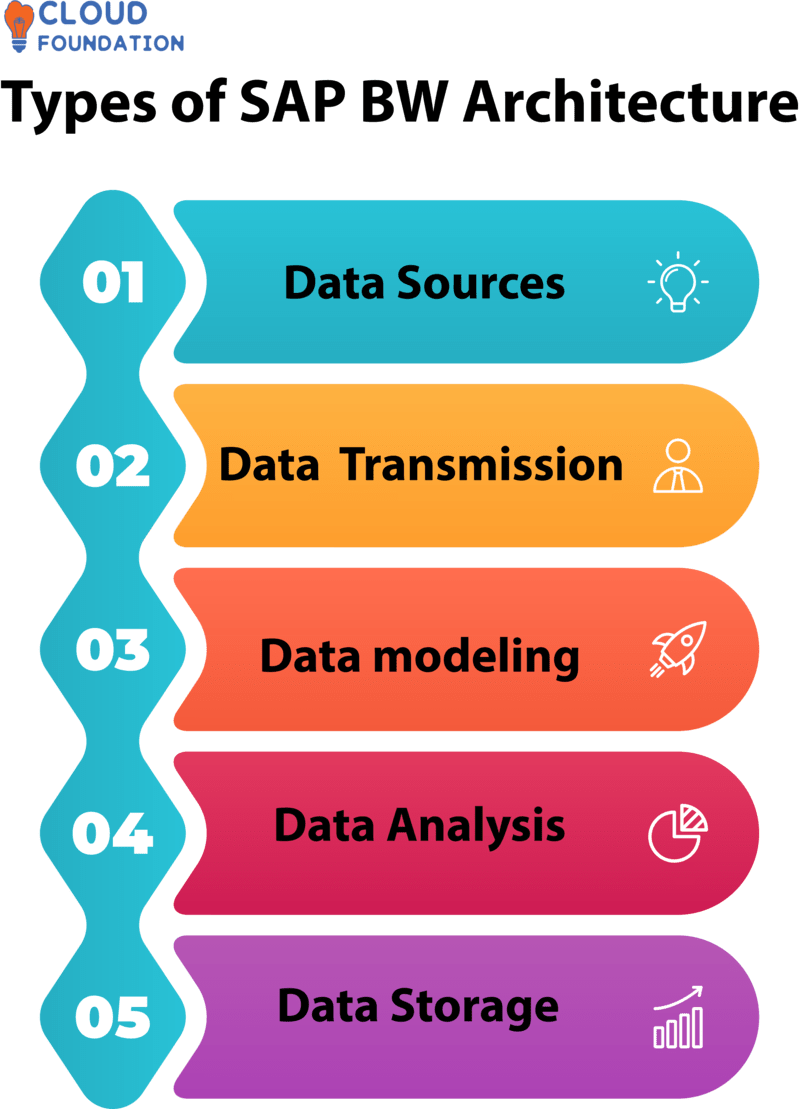SAP BW TUTORIAL – SAP BW OVERVIEW
Helping to ease you into the SAP BW tutorial, this guide covers various topics from fundamental ideas to more complicated concepts – providing both theoretical background information and hands-on examples.
This blog also includes guides for reporting, modeling and extracting data. In addition, this blog teaches users to leverage SAP BW blogs’ latest features and capabilities for data analysis, reporting and modeling purposes.
 Systematically aggregating and cleaning data from various sources, performing data transformation and performance administration tasks while overseeing system performance and administration functions for system.
Systematically aggregating and cleaning data from various sources, performing data transformation and performance administration tasks while overseeing system performance and administration functions for system.
This lesson begins by offering an introduction to SAP BW and then progresses onto more complex topics, including using SAP BW in practice, managing it efficiently and connecting it with other SAP products or third-party apps.
SAP BW MEANS
It boasts the capacity to test/improve its data models. It’s a piece of software that helps businesses gather information from many sources, analyse it, and draw conclusions.
With SAP BW, customers can rapidly and correctly analyse massive volumes of data thanks to the platform’s robust data warehousing and analytics tools.
SAP BW Overview
With SAP Business Warehouse (SAP BW), data modeling, integration, staging andpersistence tasks may all be completed quickly and seamlessly.
 In addition, reporting on large volumes of information produced from SAP and non-SAP apps becomes much simpler thanks to SAP Business Warehouse.
In addition, reporting on large volumes of information produced from SAP and non-SAP apps becomes much simpler thanks to SAP Business Warehouse.
Additionally, Data Integration Services provide data integration, dissemination across systems and purification, and robust analysis and reporting capabilities that maximize its value for further expansion of value in data sets.
Data warehouse information can be utilized in report generation, analysis and decision making processes for an organization.
Thanks to this resource, all structured and unstructured data may be securely housed within its walls.
Data warehouses collect information from multiple sources and consolidates it so it can be read easily; then store this data safely.
SAP BW Architecture Overview
SAP Business Warehouse design features multilayered architecture.

Each layer contributes to improving its effectiveness, reliability and safety – as well as its capacity for data source and processing .
With each layer contributing its part towards overall effectiveness, reliability and safety of performance. Here are a few such layers:
Data can be transmitted between its sources and SAP BW through several channels, including batch input, direct input and InfoPackages.
Data Storage: Information is organized within SAP BW in two primary formats – InfoProviders and InfoCubes. While InfoProviders serve for data management and storage needs, InfoCubes provide deeper analyses.

Data modeling on SAP BW platform is accomplished using the Data Warehouse Workbench, or DWW for short.
Users may access their information visually within this interface as well as create their own InfoObjects, InfoCubes and InfoProviders using InfoProvder.
The SAP BW Query Designer allows for efficient data analysis using custom queries in reports, charts and more. Reports and charts may all be created quickly with its help.
SAP BW Developer Roles and Responsibilities

They develop cutting-edge data analysis capabilities as part of SAP’s business intelligence strategy for customers that use it.
As part of their duties, SAP BW Developers guide their clients on how best to take advantage of all available SAP BW resources.
In addition, the SAP BW Developer is accountable for tracking fixes and updates so as to maintain optimal system functionality.
Data warehouse analysis as well as reviewing business intelligence reports are amongst their duties as well.
SAP BW Developers work closely with project management groups to deliver projects tailored specifically for individual client requirements.
Furthermore, these experts interact closely with end customers to understand their operations and translate these requirements into technical specifications for implementation purposes.
SAP BW Developers also take responsibility for user assistance, system upkeep for SAP BW systems, and ensuring optimal functioning.
In addition, additional tasks assigned by management may involve modifying current reports as well as system administration or user assistance duties.
SAP BI/BW Tutorial PDF
Tutorial PDF for SAP Business Intelligence/Warehouse SAP’s Tutorial PDFs on its Business Intelligence (BI) and Warehouse solutions provide step-by-step guides on how best to utilise them.
Data modeling, purification, transformation and integration are all possible with SAP Business Warehouse’s assistance. Business users throughout an organisation may access and share aggregated and transformed information from any source system with ease using BW.
Characteristics and Key Figures in SAP BW

BW includes applications that cover modeling data modeling staging area analytics reporting.
SAP BW has been designed for maximum speed and responsiveness across an extensive array of hosts and input/output (I/O) mechanisms.
Data is collected, processed, and sent directly to its intended recipients using components of SAP BW.
After data has been analyzed, reports, dashboards, and other analysis tools may be generated and sent directly to end users for viewing.
It gathers information from different sources before consolidating and saving it after making necessary modifications and consolidation.
Data analytics platforms also include applications and tools for analyzing the results and sharing them with end users through reports, dashboards and analytical tools.
Furthermore, multiple sources are combined, normalised and stored on one system allowing it to act as one centralised repository.

SAP BI BW COURSE CONTENT
No better way exists for learning Business Warehouse than via SAP BI BW training. Utilising examples drawn directly from current releases of SAP BW, these sessions cover scenarios taken directly from real world experiences.
Beginners will find helpful guides with clear explanations and extensive lessons designed specifically to accommodate them.
Information provisioning encompasses data modeling, exchange, dissemination and provision.
Setup, management and administration all play an integral part. In addition to ETL procedure itself, course material covers data staging, loading and reporting as well as multivendor data integration.
As an added feature, this course also explores administration, modeling and management practices as well as data supply and dissemination issues.
Data modeling and modeling data is addressed extensively throughout this course, covering loading, reporting and integrating of various vendors’ data as well as staging it all for provisioning and dissemination purposes.
SAP BW IP TUTORIAL
Learn the fundamentals of SAP Business Warehouse (BW), emphasizing its integrated Planning (IP). In this lesson, learn its data sources, data transformation features and reporting features.
The Sap bi bw guide offers in-depth guidance for managing integrated planning data through various SAP Business Warehouse (BW) modules and provides a robust reporting framework capable of processing vast volumes of information.
This system excels in terms of performance, availability, and scalability – key aspects that any developer, administrator or business user would find invaluable. They will all find this course beneficial.
Integration of other business procedures and data sources are also discussed in this tutorial.
This course uses real world examples to bring its concepts alive.
Visual representations of principles serve to reinforce their teachings.
SAP BW ON HANA TUTORIAL
You can modify data, analyse it and generate reports with this system.
This lesson for SAP BW on HANA is designed for data administrators responsible for administering and maintaining SAP BW environments.
Technical personnel responsible for setting up and overseeing sap BW Hana course content will also find this course to their benefit.
Anyone interested in understanding more about data warehousing and reporting using SAP BW systems will find this lesson beneficial.
SAP BW BASICS
SAP BW Basic concepts provide an essential understanding of its components and features for making data-driven decisions using it effectively, such as how SAP BW operates or using data analytics within it. They may include

Data modeling: Data modeling involves creating an organized structure of information to be utilized for reporting and analysis.
Data Extraction, Transformation and Loading (ETL): ETL is extracting data from source systems, transforming it to make it suitable for analysis, and loading it into the data warehouse.
Reporting: Reporting refers to creating reports and visualizations that enable users to explore, understand, and interpret the data stored within a data warehouse.
Data Mining: Data mining refers to analysing stored information to discover patterns, trends, or relationships within it.
System Administration: System administration involves overseeing all aspects of managing the business network, from adding or removing users, configuring security settings and monitoring performance to adding and deleting accounts or changing permission levels.
SAP BW Careers
Utilised for storage, querying, analysis and reporting purposes .Making up part of an organization’s information technology infrastructure in various forms of businesses across various fields of industry.
Individuals looking for careers in SAP BW must possess an in-depth knowledge of its system and be capable of taking full advantage of all its features and functions.
SAP BW Business content experts must be able to plan and execute projects, create data models for use within SAP, update reports as necessary and monitor progress. Additional skills like database and data warehouse design, modeling data warehouse and troubleshooting will prove indispensable.
Most SAP BW professionals typically possess at least a bachelor’s degree in computer science, IT engineering or another relevant subject area. Some positions may also require certification in SAP BW or related technologies.
SAP BW Tutorial for Beginners
By showing patterns and trends it reveals and creating reports with useful insights from it, better business decisions can be made using its help.
 An SAP BW online tutorial is an ideal place for novice users to begin when exploring SAP BW software. From data warehousing 101 through report writing 101, these lectures serve to familiarise themselves with all its foundational aspects.
An SAP BW online tutorial is an ideal place for novice users to begin when exploring SAP BW software. From data warehousing 101 through report writing 101, these lectures serve to familiarise themselves with all its foundational aspects.
Future SAP BW forms part of SAP’s Business Intelligence package and helps companies with all their reporting and analytical requirements by centralising data storage in one centralised place.
SAP BW faces bright prospects going forward. SAP has invested significant effort and money in creating a version based on SAP HANA in-memory computing platform for use with its new version of SAP BW.
Businesses require platforms that can respond quickly to changing requirements, and SAP BW/4HANA delivers.
Compatible with various SAP applications and technologies enables cross-stack data access and analysis across SAP products such as S/4HANA, HANA Cloud Platform and SAP Analytics Cloud.
There is plenty of opportunity in SAP BW. To gain more knowledge and make learning step by step easier, CloudFoundation has all kinds of valuableresources, videos, interview questions& answers as your guide.


Tanya
Author
“If you can dream it, you can do it. Trust yourself that you can do it and get it.”
